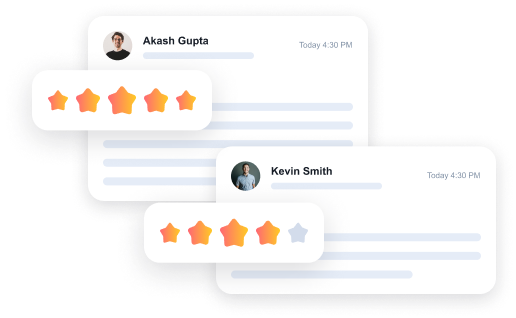










It is only possible to succeed in the international marketplace by adapting your message to the local contexts of your target audiences. Equipped with this understanding, the need for a good localization agency should be obvious. A localization agency can help you adapt content to the correct target demographics for each local market; they can also ensure the integrity of your message in the context of foreign cultures. Awareness of why localization agencies are so necessary (and how to work with one, be it a localization agency directly or translation freelancers indirectly) now equips you to take your international expansion efforts to a whole new level.
This article is dedicated to the topic of collaboration and localization. Here are some pointers on how a partnership with the localization agency works. After that comes a description of the most typical collaboration challenges and an explanation of how to overcome them. In the end, we will discuss the collaborative role of technology. Suppose you are done with reading this article. In that case, you should achieve your goal: successful cooperation with the localization agency to attain the maximum in-house resources and external translation freelancers.
Only after your project has been localized by a well-functioning team consisting of one reviser, one reviewer, one project manager, one account manager, and one proofreader (as recommended by the relevant ISO standards) can you expect a high-quality translation and satisfied customers.
Higher quality: cooperation benefits from peer review in that the specialists of many colleagues check this translator's work.
Increased Efficiency: Teamwork speeds up the process, allowing quicker turnaround times.
Communication between teams and clients needs to be clear and ongoing.
Problem-solving: People can resolve problems faster when they work together.
Establish communication: set up clear feedback lines about project goals and deadlines.
Build a culture that feels good: For instance, do exercises in team-building, team training, and team-coaching to make staff feel answerable to one another and valuable to one another as a mass.
Focusing on these collaborative practices can ensure that projects succeed and clients are happy when international expansion occurs.
The better a localization agency works, the more staff will recognize that each other has individual skills and strengths. Project managers can also treat the team like this, assigning each job to whoever is best equipped to tackle it and get the best results.
Without translation Management Systems (TMS) and computer-assisted translation (CAT) tools, the loop wouldn't be closed, and the workflow wouldn't be optimized. Terminology management tools operating on a similar principle ensure that terms are consistently used among projects.
Context matters, and the more context, the better via project briefs, glossaries, and style guides, as they help the translator discern the nuancing under the text and get closer to the life of the original than to some formalist text that might make sense word for word while being strictly inadequate by being excessive.
A robust and continuous feedback loop is a necessary part of ongoing improvement: project managers must incorporate immediate feedback to translators on language, process, and performance, particularly error correction, to improve language quality across the chain. Equally important is the recognition and encouragement of good performance, helping to develop a culture of growth and success in their teams.
With context, the translator can avoid creating the wrong (or misleading) translation if more contexts are needed to understand and express the context. Ensure your translators can access the full context and all applicable style guides and glossaries. If you're discussing something with your translation team, make sure they get the answers to their questions and are upfront with you about what they understand the context. Now that automated processes mainly handle software localization, modern software localization platforms can be linked to your design software. This is often very useful since you can link UI screenshots and give the translator a more precise context.
Time-zone coordination with co-workers around the globe can be challenging; the more global you become, the more you will have to do it. Plan to use offline tools (i.e., synchronous) communication modes like email and chat to prevent time-zone differences from becoming a factor in your daily work habits. Set key meetings or interactions to overlap with core hours across the various time zones in play, but also rotate them so that everyone on shift work or sucked into a global project doesn't permanently have weird hours (and the rest of you can take that off the hook). Leverage and encourage tasks and project management tools for coordinating synchronous work worldwide on an on-demand basis.
The quality consistency of your products' translated assets and user interfaces is invaluable to your brand integrity – how your goodwill and brand is perceived across markets in products translated from your home market into others. LQA (Localization Quality Assurance) processes to test and verify the linguistic and cultural correctness of your translated content and user interfaces are part of this process. Use TMS (translation memory system) and glossaries to retain linguistic and coding consistency of all your translation work. Make sure that your use of TMS and glossaries are evergreen – that is, improve them each time there are learnings and feedback to certify them. Your translation memory and glossaries will grow with each certification at the next point of use.
Lack of language competency often inhibits collaboration in multilingual and multicultural work teams. Consider offering in-house training programs or language coaching to help your employees develop more appropriate language skills. Foster plain-language communications to remove an additional impediment to teamwork. Provide employees with the tools they need to work together more productively. Give professional translators the difficult task of conveying critical communications. Consider implementing technology tools for real-time translation. Ensure that all team members can get on the same page about the work, regardless of their language backgrounds.
Translation Management Systems (TMS): These central platforms, which enable a more collaborative version of localization through automation and controlled conditions, lie at the core of any intelligent localization process. The TMS provides translation and terminology memory and automated workflow functionality that helps make documentation more consistent, coherent, and manageable across languages or projects.
Your project teams benefit from effective communication, which is why integrating project management with real-time messaging tools—such as Slack—can help your team members talk to each other in real-time, share files, and track the status of each project in real-time. This way, they know what to do at any given moment and promptly respond to any changes to the project.
Secondly, automation is one of the hallmarks of NLP-based localization projects, as it formalizes and automates repetitive tasks, such as translation memory updates or quality-checking, as required by various tools companies use. This eliminates the need for creating style guides by hand and so on. Thirdly, automation can be leveraged to ensure consistency among projects and languages from one project to another.
Besides the fact that all written communications and documentation for a localization project have to ultimately end up in a central database (to ensure that all team members are working with the latest versions of the documents), better coordination will stem from having just a few feedback and question points instead of many. Better coordination minimizes the risk of miscommunication between individual team members, which can lead to errors, cause delays, or literally 'loss in translation' during a localization project.
In looking at some best practices for working with overseas localization agencies, I think that we can see that some of the essential elements of success in the international market are the human elements of teamwork, new applications of technology, and a specialized understanding of what is needed to undertake the translation task successfully. Picking the right translator, leveraging technology to help with communication, and providing as much context as possible will help you get through the localization process quicker and with a better end product. Doing this will increase the chances that your content will be understood and support your international expansion efforts.
Neither of these critical issues to successful collaboration (and translation) can be overstated in importance. We cannot recommend using translation management systems and automation for these issues. By utilizing translation technology and intelligent automation, these obstacles to teamwork and consistent results become more accessible to handle or, at the very least, far enough in the background that the real work gets done. When companies expand into new global markets, these tips offer a guide to leveraging international collaboration and technology to succeed in localization. When organizations use these practices, they improve their organizations and connect with new audiences in different languages worldwide.












